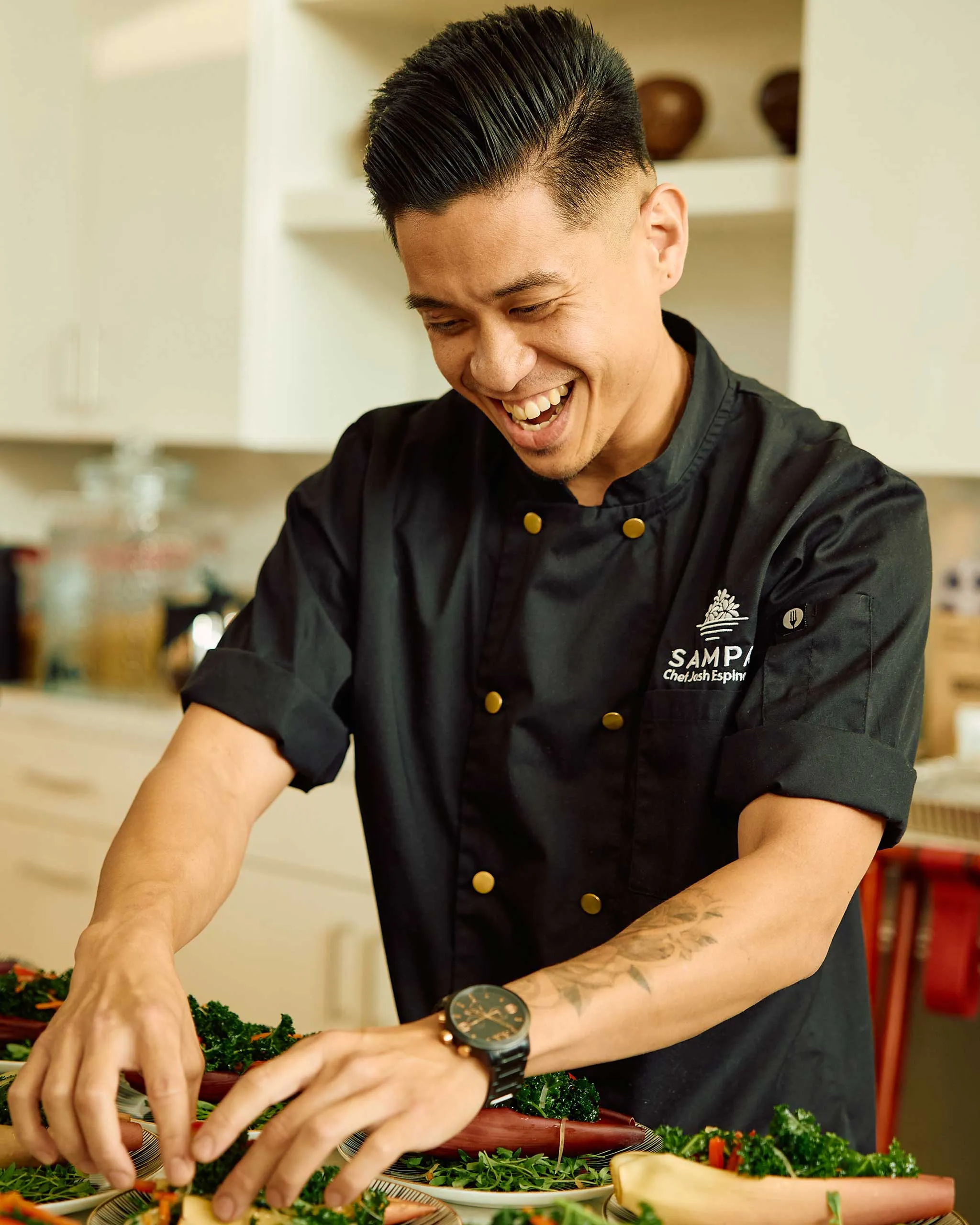Josh Espinosa, Sampa LA executive chef and owner. Photographed by The Lounge Booth. Courtesy of Sampa
In the Arts District of Los Angeles, California, Sampa reimagines Filipino flavors in different forms.
Sinigang is a recognizable Filipino dish that is known around the world. Its warm tamarind-based broth filled with meat and vegetables such as spinach, radish, and eggplant, is a staple in the Philippines, whether it’s the wet or dry season. Guava, watermelon, and unripe mangoes are some of the twists some recipes call for. But for Sampa Los Angeles, the dish completely takes on a different form: Sinigang Xiao Long Bao.
“It’s one of my first staple dishes,” says executive chef and owner Josh Espinosa. Taking his mother’s sinigang recipe, then combining it with the techniques he learned from working at Din Tai Fung, the dish is an example of what you can expect when you walk through Sampa’s doors. The same traditional Filipino flavors, but created in a different format using global techniques. Kare-kare is transformed into a tamale, and sisig is crafted with soft-shell crab. Ube becomes a cheesecake with polvoron crust, paired with a jackfruit whipped cream.
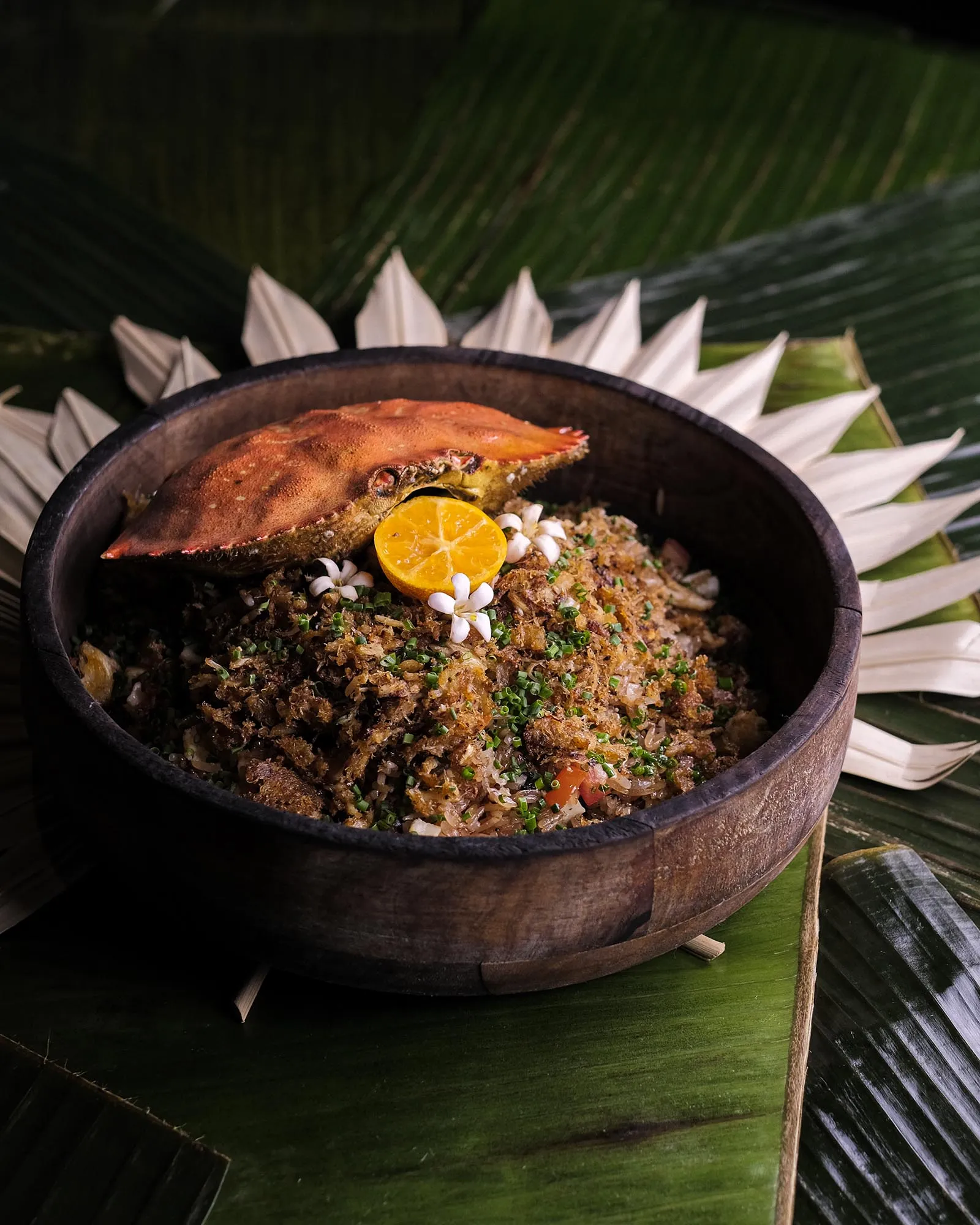
The fusion of different cuisines with Filipino flavors reflects Espinosa’s upbringing as a first-generation Filipino-American in California. Growing up in a diverse community, Espinosa’s life has been exposed to a multitude of cultures. He grew up eating classic Filipino dishes, such as humba, palabok, and fried tilapia. Just next door, he would also eat Mexican and Vietnamese foods, introducing him to other flavors. “For me growing up, I just feel the food scene in LA is just growing,” he shares.
Before becoming a chef, Espinosa used to be a dancer for Kaba Modern at UC Irvine alongside his COO, head of marketing, and co-owner, Jenny Valles. “My heart is an artist,” he shares. He brought the same energy to cooking, which he began pursuing when he enrolled at La Cordon Bleu College of Culinary Arts. Since then, he has worked for various restaurants, including Pelican Hill in Newport Beach, Din Tai Fung, AnQi Bistro, and Crustacean Beverly Hills. At the Crustacean Beverly Hills, Espinosa shares that he was inspired by their head chef, Chef Helene An, widely known as the “Mother of Fusion Cuisine.”
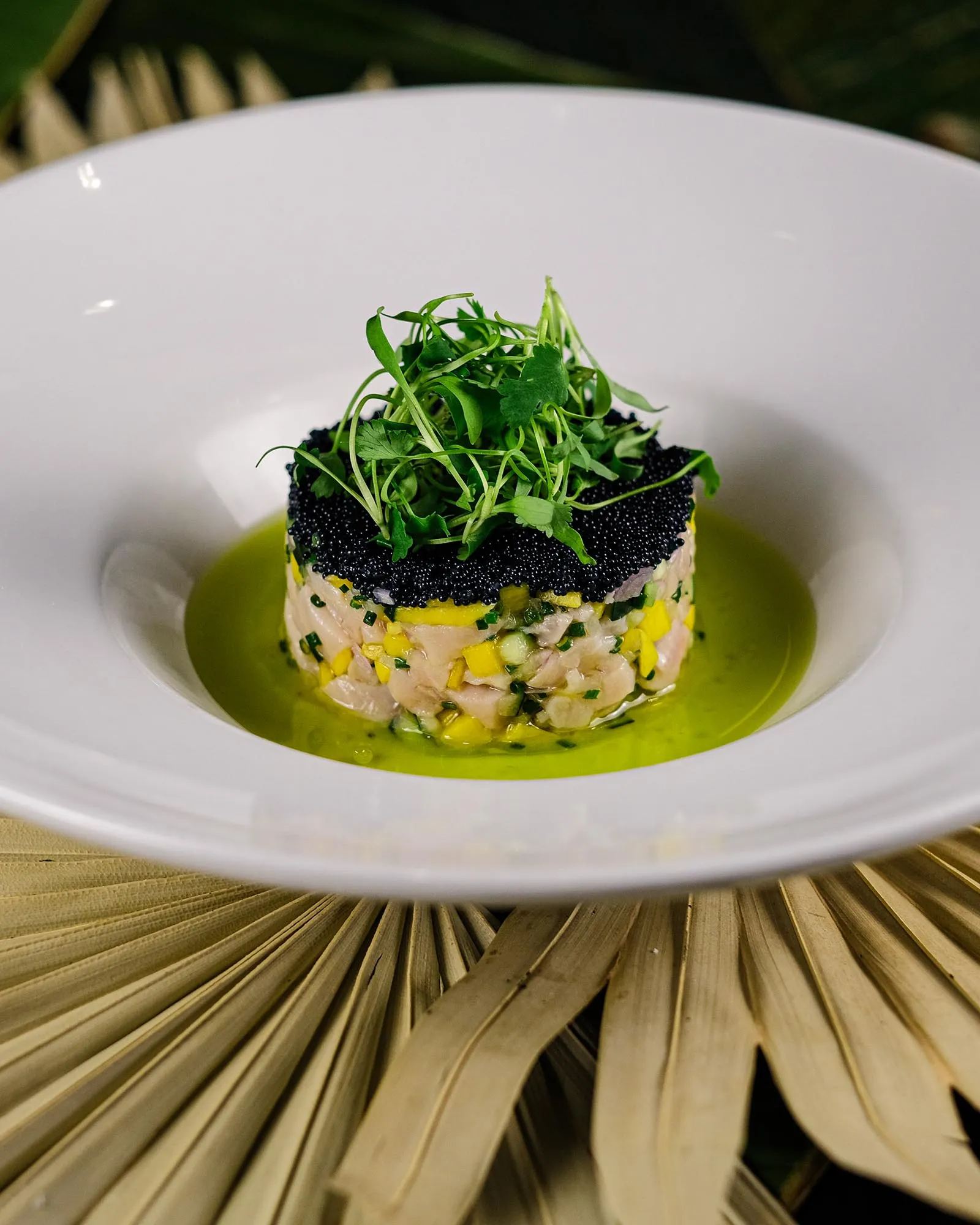
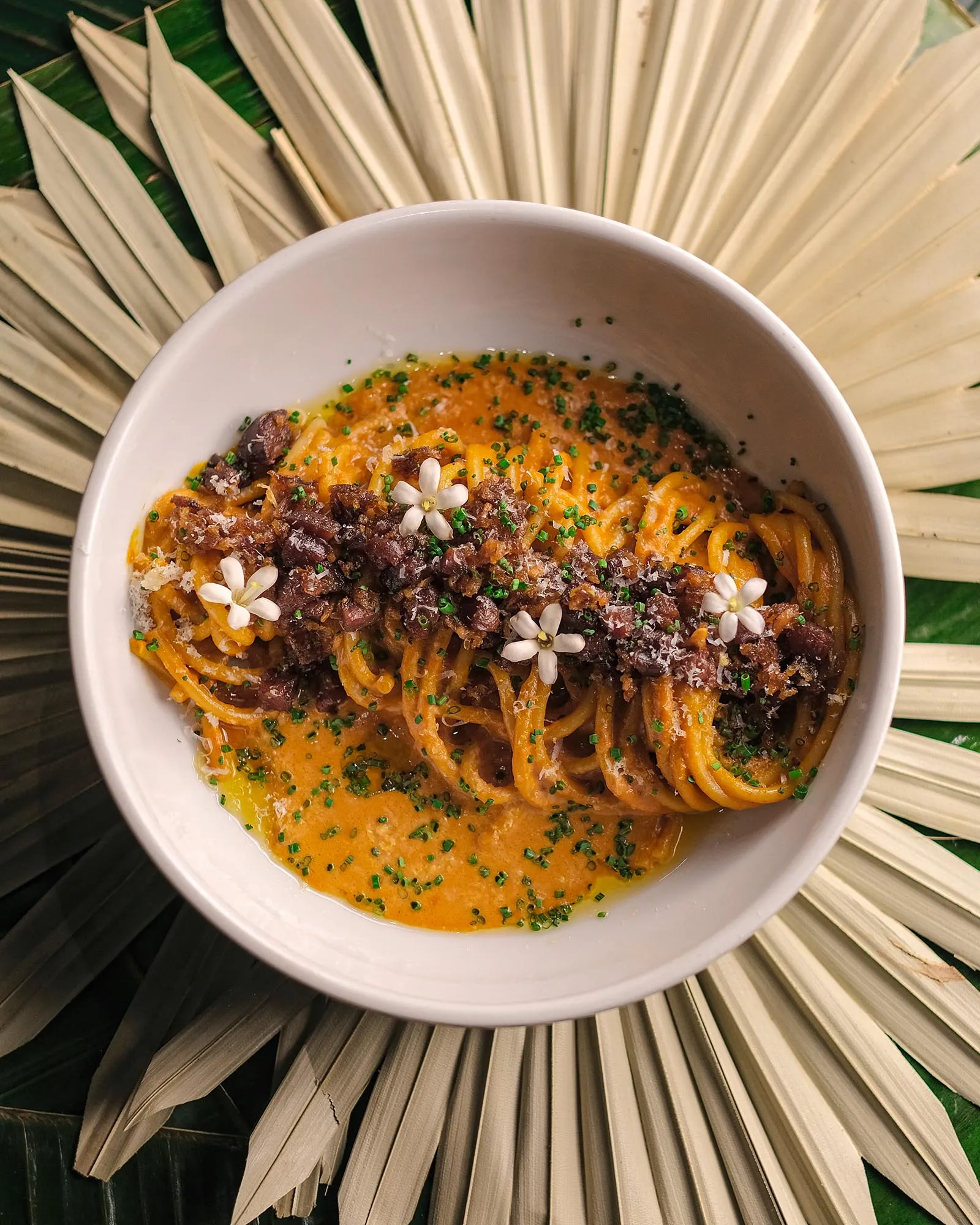
Seeing various restaurants and chefs getting creative with their food, Espinosa envisioned seeing the same kind of creativity in Filipino cuisine. “How do I tell my story of my favorite foods from my grandparents, parents, and cousins, but also, going next door, eating Mexican food almost every day, learning French and Italian techniques? How do I put that all into my story as a Filipino chef and uplift and showcase Filipino ingredients and food in a different light?” he recalls himself asking.
Like other people, the pandemic served as a catalyst for Espinosa. When indoor dining was shut down due to lockdown, Espinosa saw an opportunity. “Josh, right then and there, was like, ‘Takeout is going to boom. No one’s allowed to sit in restaurants, but people still need to eat,’” shares Peter Rosenberg, general manager, co-owner, and Valles’ husband.
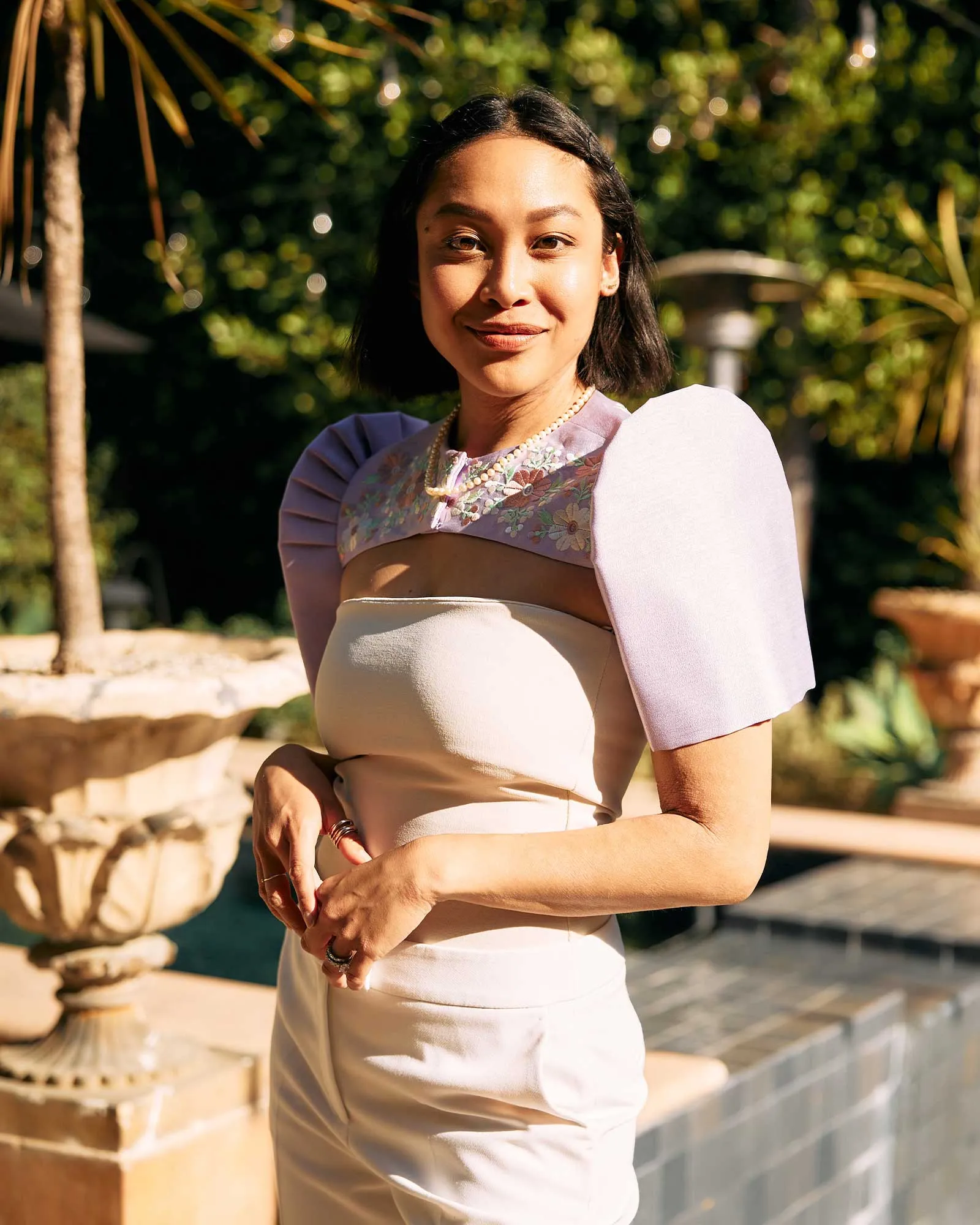
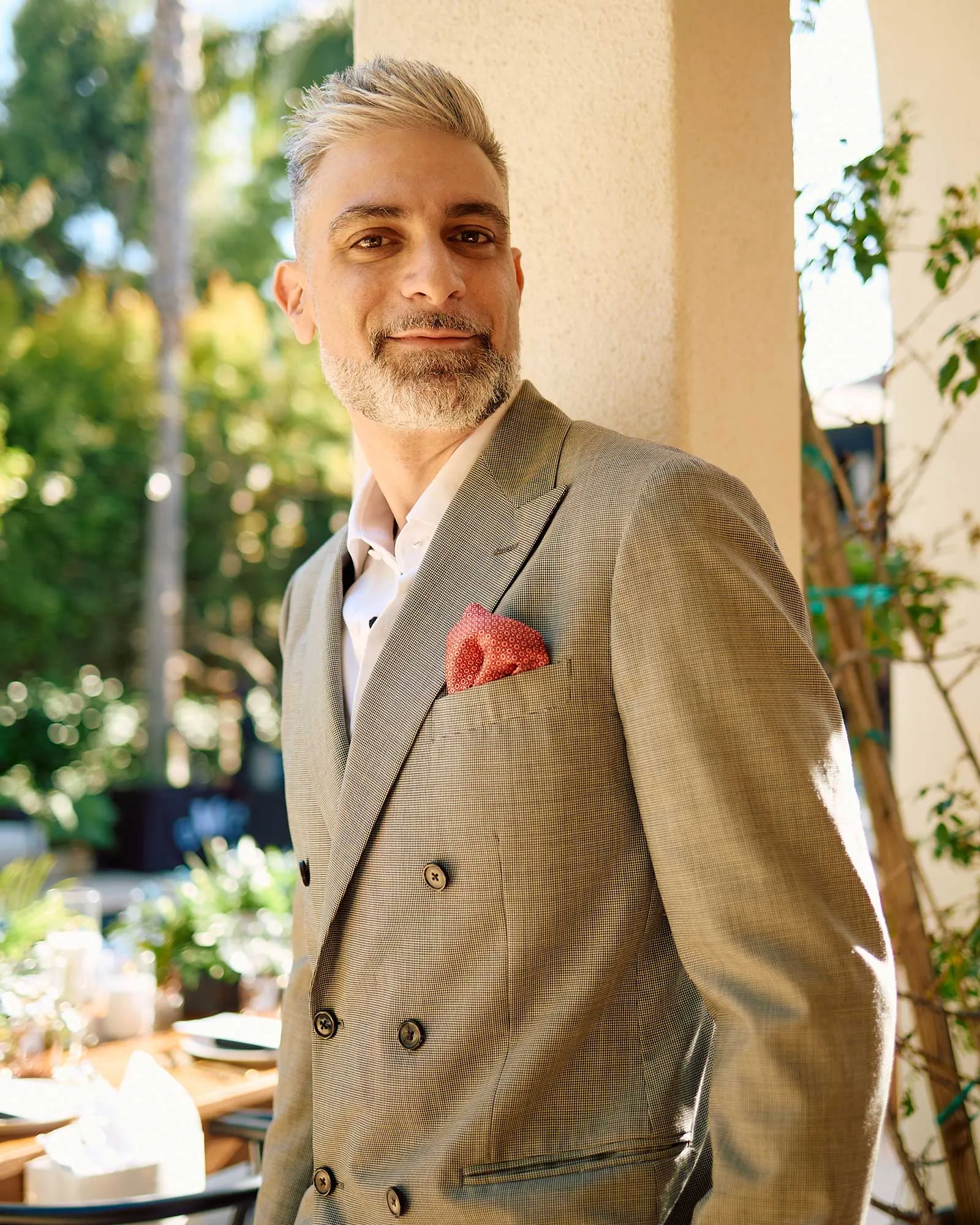
And so began Sampa’s experimentation. Its first few dishes were conceptualized in Espinosa’s apartment, with family, friends, and the community serving as their initial customers. “When it comes to Josh and Jenny, cooking is kind of like freestyling at first. You’re moving to the beat and you’re using what you have in your arsenal, and then it starts turning into something,” says Rosenberg. “I built an archive of literally thousands of dishes,” Espinosa adds.
Soon enough, word about Sampa’s creations spread. Clients such as Netflix, Spotify, and 88 Rising began coming to them for their services. Most recently, they catered to the Filipino Forces’ annual feast and fiesta. Filipino-American R&B artist H.E.R. is another fan of Sampa, sharing in a personal note to their team that her favorite is the Sinigang Xiao Long Bao. She writes, “I will be back very soon. Maraming maraming salamat sa inyong lahat! (Thank you very much to all of you!)” With this momentum, they branched out of Espinosa’s kitchen and temporarily found a small location in the Arts District, which eventually became Sampa’s home for the past year.
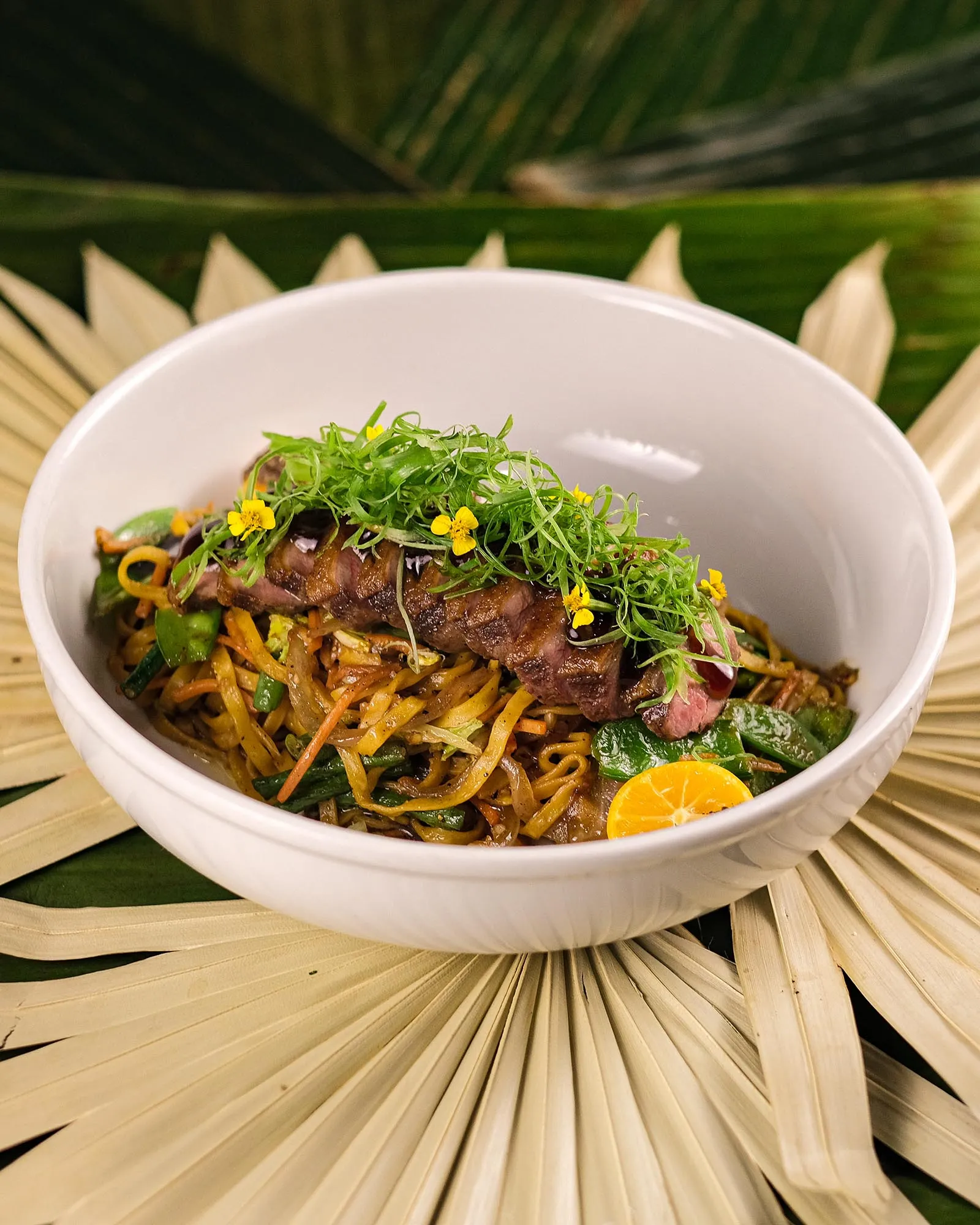
For Espinosa, fusion is not just a means to create new flavors but a way to introduce Filipino cuisine to other palates. “We’re at least bridging the gap of those who have never had traditional Filipino food,” he says. “And for us, if that bridge takes them to actually being willing to try traditional Filipino food, then we can be proud that we bridge that gap for them.”
This rings true for Valles, whose family had adapted to the American way of life due to the prejudice they received when they immigrated. “I’m always rediscovering our culture,” she says. “It’s actually through Josh that I’m learning, as his partner. It’s cool to be in this position to keep learning as I’m getting older.”
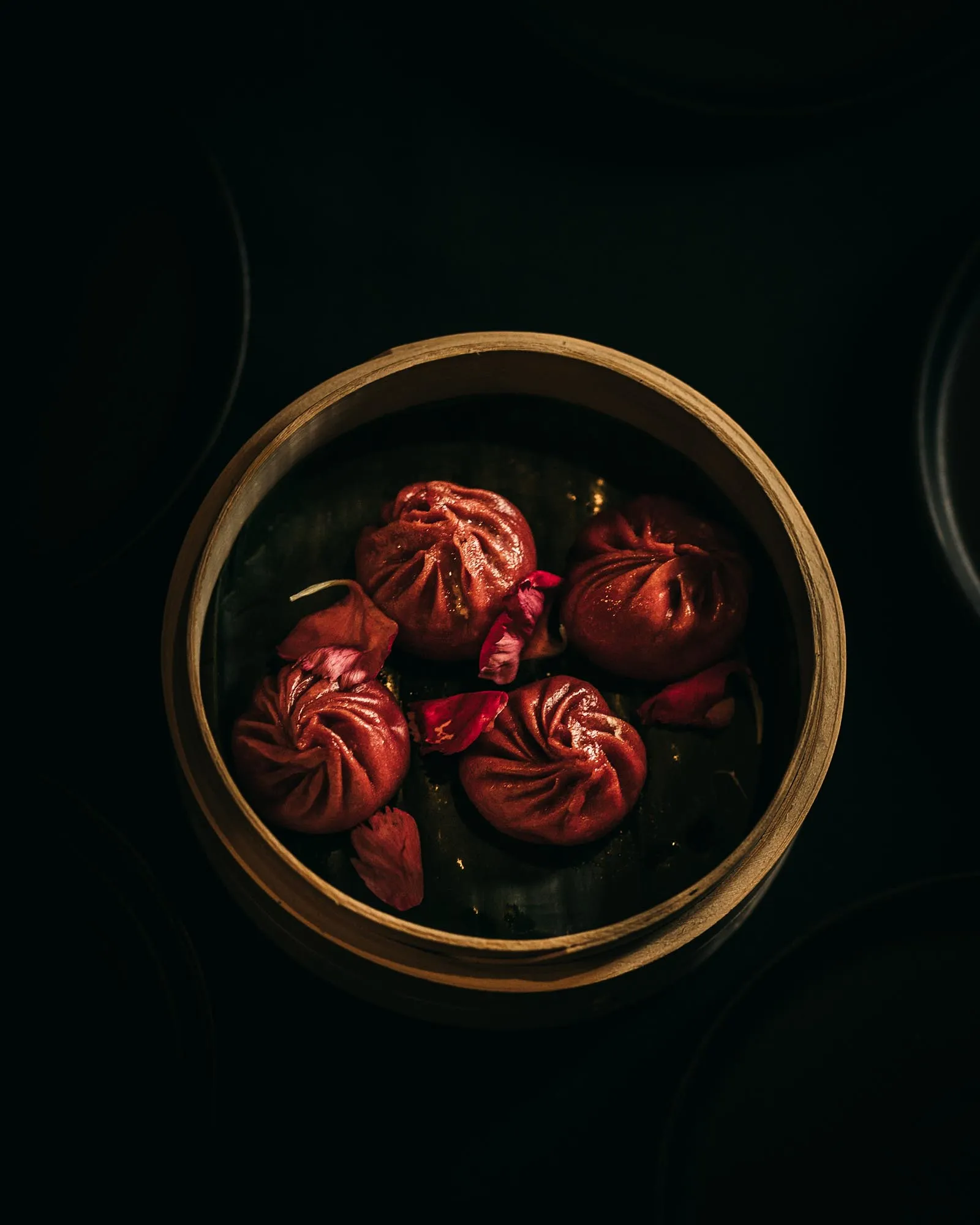
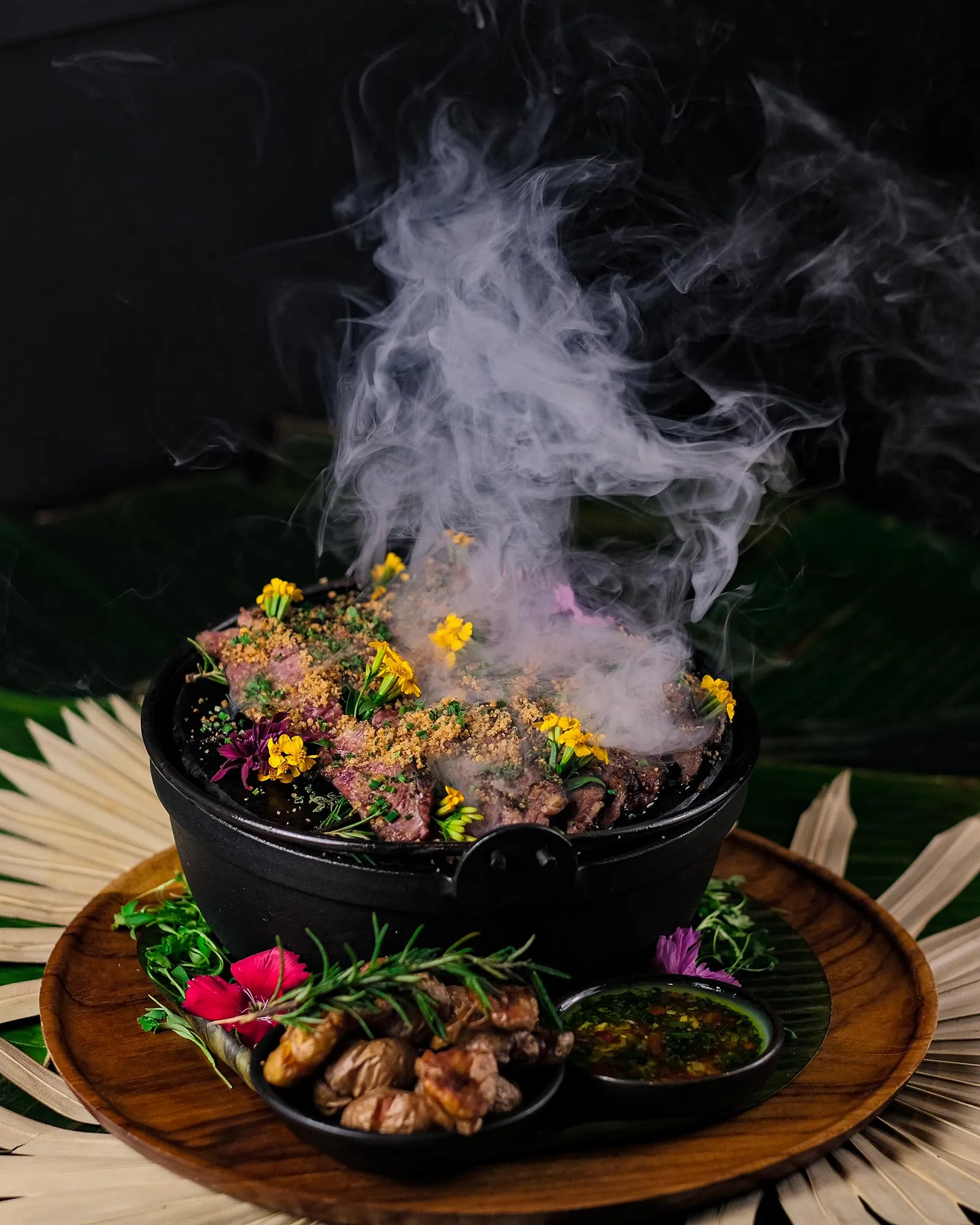
While Sampa is an introduction to Filipino food for some, it sparks nostalgia in others. Rosenberg recalls a customer ordering pasta palabok and being surprised by its appearance. “We’ll just take a bite of it,” they said. Then, they closed their eyes, tasted the dish, and said, “It tastes like how my lolo used to make it for me. Thank you.” Rosenberg likens the experience to music: “If you hear a song that you hadn’t heard in a really long time, it’ll take you back to the first time you ever heard that song.”
Espinosa also makes the effort to return to his family’s roots. Every year, the team visits the Philippines, exploring the local flavors and restaurants. But this coming October, they’re bringing Sampa’s flavors to the country. “The dream is to open up a restaurant one day,” Espinosa shares. In the meantime, a pop-up is an opportunity for them to explore opportunities for Sampa on Philippine shores, while introducing their uniquely Filipino-American flavors.
While their eyes are set on these sights, the trio is currently focused on their restaurant in LA. The team is hopeful that by the end of 2025 or early next year, Sampa will have its official grand opening. “I’m looking forward to Sampa Los Angeles becoming fully streamlined and allowing the three of us to bring our cuisine and concept to other markets that I think it would thrive in,” Rosenberg shares.
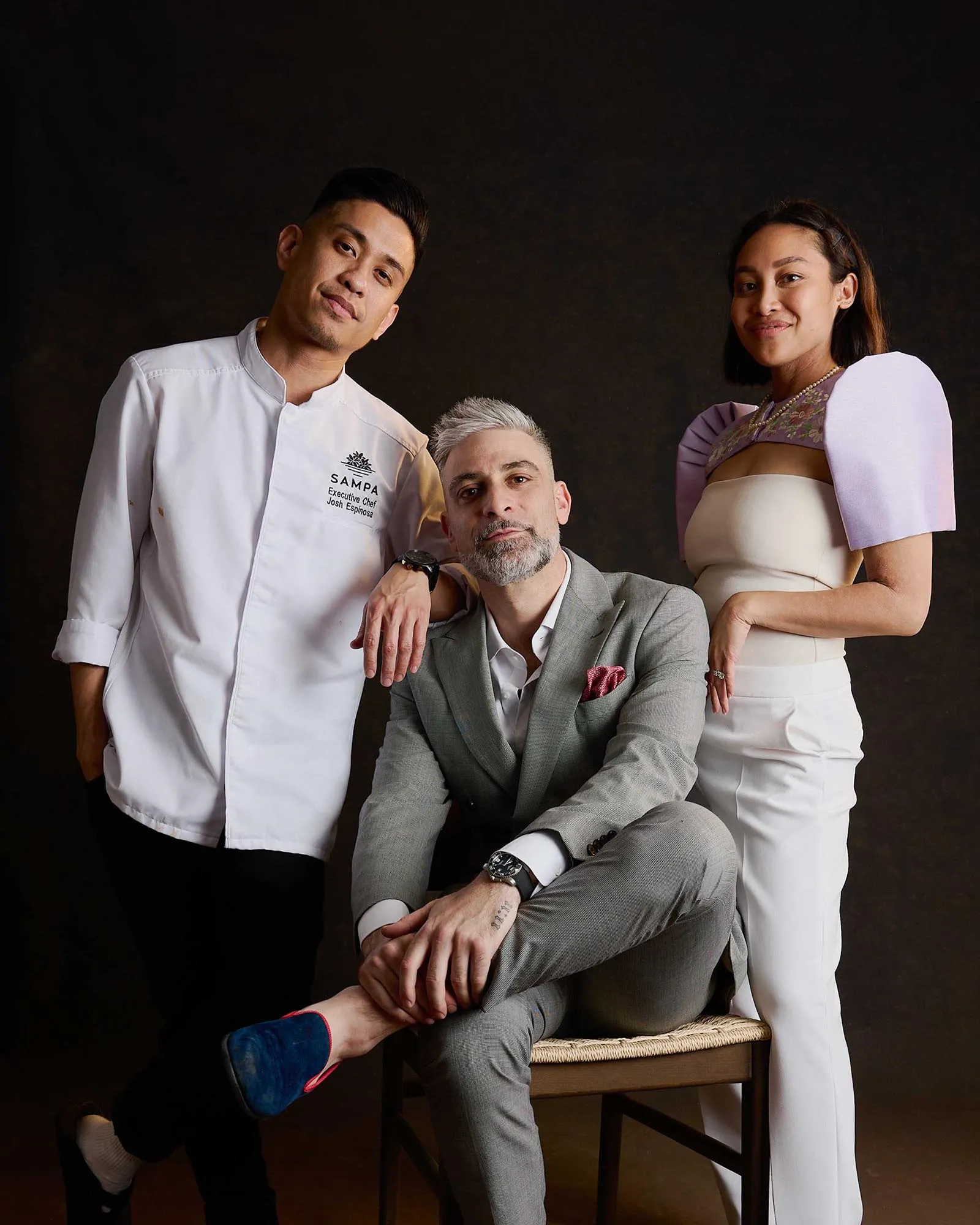
As it gears up for its grand opening, Valles is looking forward to introducing more of Filipino culture to the area. “Just incorporating our personality, our Filipino heritage, is going to be huge for us, and we can’t wait to tell our story,” she says. Esinosa, on the other hand, is hopeful that the restaurant will inspire chefs to try new things. “That’s the joy of being a chef, right? You keep creating, there’s no wrong way to it,” he says.
While the restaurant initially named itself “Sampa” after the sampaguita flower, the word “sampa” also refers to the act of climbing. It’s a happy coincidence, the team says, and it’s reflective of what they want to do with Filipino cuisine: to elevate it to the level it deserves to be seen on.
